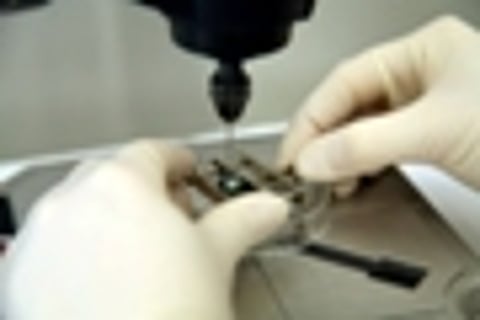

The team of Swiss researchers was able to recover minute amounts of DNA from a wide range of pearls. The amount of recovered DNA was sufficient to identify the mother oyster species of studied pearls. The sampled pearls came from Pinctada maxima, Pinctada margaritifera and Akoya oysters, which are the most important species in the trade of natural and cultured marine pearls. Samples also included Pinctada radiata pearls from the Arabian/Persian Gulf, Pinctada maxima from both Australia and Indonesia and Pinctada margaritifera from Fiji and French Polynesia.
By collaborating with the Institute of Integrative Biology (IBZ) of ETH Zurich, the research team had access to extensive DNA extraction expertise and technology. The project was led by Dr. Joana Meyer of ETH Zurich and Laurent Cartier of SSEF. This two-year research project funded by the Swiss Gemmological Institute SSEF was carried out to advance knowledge about pearls and to investigate the possibility of using DNA to carry out geographic origin determination of pearls. An important part of this project was the development of a practically non-destructive technique to extract DNA so as to preserve the commercial value of tested historic and modern pearls. In one sample, 10 mg of drilled sample powder (see figure below) was sufficient to successfully identify the pearl-oyster species based on extracted DNA material.
Dr. Michael S. Krzemnicki, director of SSEF, commented: "This is a breakthrough in pearl science and opens up new and interesting opportunities for future pearl research and testing. We are constantly exploring new scientific methods to test pearls and are excited about this new method we have developed in collaboration with scientists at ETH Zurich, one of the world's leading universities. " He went on to say: "These new methods give us a considerable advantage in distinguishing different types of pearls and for the future documentation of historic pearls. We hope to add them as client services in the near future."
Also, new developments in pearl science builds upon another pearl research project on age determination of pearls. This particular project was carried out by Dr. Michael S. Krzemnicki (SSEF) and Dr. Irka Hajdas from the Ion Beam Physics Lab of ETH Zurich, showing that the age of a pearl can be determined. This research was recently published in the international journal Radiocarbon, and further research is currently underway on a larger number of pearl samples of different ages.
Combining these two powerful methods - DNA fingerprinting and age determination - will improve traceability in the pearl industry and offers new ways of documenting the provenance of both cultured and natural pearls, but will also will be helpful in documenting historic natural pearls.
Follow DiamondWorld on Instagram: @diamondworldnet
Follow DiamondWorld on Twitter: @diamondworldnet
Follow DiamondWorld on Facebook: @diamondworldnet
